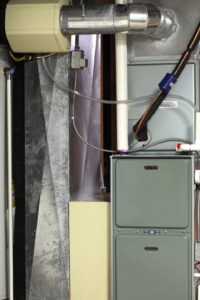Fierce winds from Hurricane Sandy are approaching the Washington DC area, and we are told we may sustain power outages for several days. Our temperatures are predicted to stay in the 40’s. Most central heating systems including furnaces and boilers use electricity and will not operate during a power outage. As far as hot water, most electric water heaters will keep water warm for 6-12 hours after a power outage. What do you need to know to be prepared?
1. Do not use portable or camping kerosene heaters indoors; there is no ventilation for dangerous fumes.
2. Do not use your gas stove or burners for heat, there is a substantial risk for carbon monoxide poisoning.
3. Portable generators need to be run outside, and read instructions for proper ventilation. Do not plug a generator into an electrical outlet to attempt to power your home, this could send power back through the utility lines and electrocute a utility worker trying to restore your power.
4. Do not leave candles unattended.
5. Do use your fireplace, making sure the floo is open. If you have a vented gas fireplace, understand it was designed to be decorative but may be useful to heat one room.
6. Congregate in one or two rooms, and keep the doors closed to maintain heat.
7. Test your flashlights and battery powered radio, and know the location of your spare batteries and emergency kit.
8. Know where your utility shut off valves are located in case you are instructed to do so.
9. Check your water supply. You should have 1 gallon per person, per day. If you find you are short, fill up plastic water bottles now from the tap, before the power outage.
10. Check out www.ready.gov for more information on preparing for Hurricane Sandy.
All of us at Polar Bear Air Conditioning and Heating, Inc. are hoping that these tips are helpful to you, and that you and your family will be safe during this storm. Our emergency number is posted at the top of our website, and you can stay informed by following us on Twitter @PolarBearAC or liking us on Facebook.
Continue Reading
Tags: Boilers, Furnaces, generators, Heating, Hurricane Sandy, power outages, Washington DC
Posted in Heating | Comments Off on Hurricane Sandy, Power Outages and No Heat: What to Do?
 We’re never going to tell someone not to call us. We love hearing from our customers, we enjoy helping out our friends and neighbors, and it’s important to have a team you can trust to help when you need it. That being said, there is definitely a time and a place for furnace repairs, and if that time and place is all the time for your home, then something is clearly wrong.
We’re never going to tell someone not to call us. We love hearing from our customers, we enjoy helping out our friends and neighbors, and it’s important to have a team you can trust to help when you need it. That being said, there is definitely a time and a place for furnace repairs, and if that time and place is all the time for your home, then something is clearly wrong.

